History of Woodthorpe Grange Park
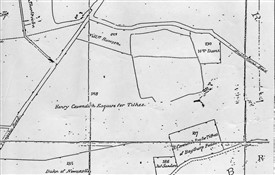
1792 Enclosure Map of Woodthorpe
Paul R. Swift
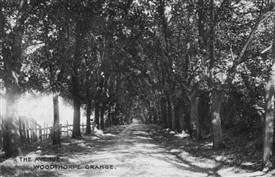
1921, Elm Tree Avenue, Woodthorpe Park
Unknown
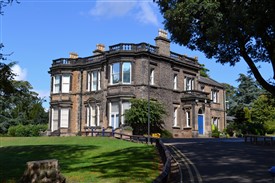
Woodthorpe Grange
Paul R. Swift
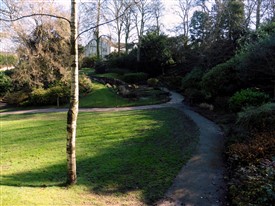
Dell Gardens, Woodthorpe Park
Paul R. Swift
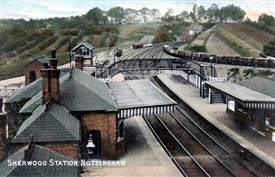
Sherwood Station
Unknown
Historical and Pictorial Guide
By Paul Swift
From the date it first opened on Thursday 1st June 1922, Woodthorpe Park has been part of the City of Nottingham for just over 100 years. For those, like myself, who have lived all their life facing Woodthorpe Park, and for those who are its visitors, it is hard to imagine life without it.
To this day and age, it is all too easy to take for granted our places of communal recreation. As far as we the general public are concerned, they have always been there. But like all things in life, they all had a beginning. That beginning was mostly through events that took place maybe three or four centuries ago. For example, Nottingham's Forest Recreation Ground was one of the original areas to be protected in perpetuity by the 1845 Nottingham Enclosure Act, which set aside 80 acres (32 hectares) for public recreational use.
For over 300 years the Forest has been home to sports, including horse racing, cricket, and football. In 1773 it was home to the Nottingham Racecourse, where it remained until it moved in 1892 to where it is today at Colwick. Nottingham Forest Football Club also played its first games on the Forest after its formation in 1865, hence the club's title, 'Nottingham Forest.' Also, and most importantly. the Forest Recreation Ground plays host to Nottingham's annual Goose Fair.
Traveling even further back in history Nottingham Forest once played its part in Nottingham's hosiery industry, with a series of windmills that were used for spinning cotton.
Unlike the Forest Recreation Ground's sporting heritage, Woodthorpe Grange Park's heritage lies in one of Nottingham's primary industries, brick making through the Nottingham patent Brick Company, and expansion on Britain's rail network with the construction of the Suburban Railway.
The brickworks, the railway, and ultimately the 52 cares we know today like the Forest Recreation Ground, and the Woodthorpe Estate, as it was known as not to be confused with today's Woodthorpe housing estate, began 53 years earlier in 1792 and the Enclosure of Basford. This was when land lot 188 was allotted by the Enclosure Commissioners of Basford (as Sherwood and Mapperley came under the Parish of Basford) to Henry Cavendish Esquire the 6th Duke of Devonshire for Tithes, and in the same area, William Rawson and William Danes were allotted land 189 and 190 respectively. However, before the 1792 Enclosure of Basford, the core of Woodthorpe Estate was marked out in a 1609 Crown Survey map of Sherwood Forest as an enclosed field that was occupied by George Hutchinson, a freeholder of the land.
The enclosure of Sherwood and Mapperley, when it came into force, meant that all the land bounded by the present-day Redcliffe Road, Mansfield Road, Private Road, and Woodborough Road.
In all, the Enclosure Act simply meant: The extinction of common rights that people held over farmland and commons of the parish, the abolition of the scattered holdings in the open fields, and the reallocation of holdings in compact blocks, accompanied usually by the physical separation of the newly created fields and closed by the erection of fences, hedges and stone walls. Thereafter the lands so enclosed were held 'in severity' that is, were reserved for the sole use of the individual owners or their tenants."
What we know as today's Woodthorpe Grange Park began as a 40-acre farm of grass and arable land, bordered by Mansfield Road and Scout Lane (now Woodthorpe Drive) and was owned by Alfred Pogson, who in May 1871 put the land up for sale at an auction, where the auctioneer, William Whitehead, produced a sketch map of the area on which it was strongly suggested a 50ft wide road should be built from Mansfield Road right through the heart of what is now Woodthorpe Grange Park. This road was to serve the many villas which could have been built on the site. Fortunately, the houses were never built.
John L. Thackery of Arno Vale House who purchased the land in 1871, a short time later sold it to Henry Ashwell a master Bleacher, who owned factories on Radford Road in the new Basford Area of Nottingham.
Ashwell bought the land in order to create his own estate complete with a private house, Woodthorpe Grange, which was built in 1874, and lived in it with his wife Sarah and two daughters, Mary and Frances, along with two nieces and four servants. The estate was extended in 1881 when Ashwell bought the small brickworks on Scout Lane (Woodthorpe Drive) from John Harrison for £655 and converted it into the Dell Gardens, which are now part of the park. Unfortunately for the Ashwell family, the halcyon days did not last for long because in 1889 the Nottingham Suburban Railway was opened and the line ran right across and under Ashwell's estate.
Although compensated financially, Ashwell was not happy about the Nottingham Suburban Railway crossing right across his estate in 1889. It is recorded that he insisted that Ashwell's Tunnel, named after him, was lengthened by 10 yards so that it would not disturb the hay ricks in his farmyard Woodthorpe Farm.
Shortly after the arrival of the railway line, Henry Ashwell sold Woodthorpe Grange and Estate to Edward Parry. Parry was a highly renown civil engineer and amongst his many eminent positions, he was Nottinghamshire County Surveyor, designer, and surveyor of the Nottingham Suburban Railway. He also designed the Dore to Chinley Railway but was also importantly the surveyor for the northern section from Annesley to Rugby of the London extension of the Great Central Railway.
It is not clear whether Edward Parry ever actually lived in Woodthorpe Grange. This is because, in the 1891 census, he is recorded as age 46, living with his wife Mary, two daughters, four sons, and three servants at Elmhurst in Lucknow Drive, Mapperley Park. In 1905 Parry sold Woodthorpe Grange and Estate to John Godfree Small lace manufacturer, councillor, and Mayor of Nottingham in 1915 and again in 1917.
For more information, visit the Friends of Woodthorpe Grange Park's website on www.woodthorpefriends.co.uk